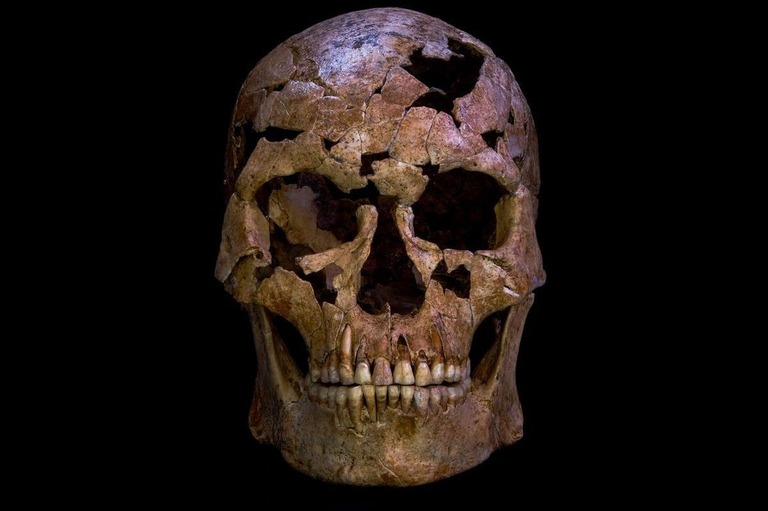ベトナムの
洞窟で、
約1
万2
千年前の
男性の
人骨が
見つかりました。
A male skeleton from about 12,000 years ago was discovered in a cave in Vietnam.
は、
首の
骨に
矢のようなものでけがをしていたと
考えられています。
It is believed that this man sustained an injury to his neck bone from something like an arrow.
けがをした
後、すぐに
死んだのではなく、
感染症で
数か月後に
亡くなった
可能性が
高いです。
After being injured, he may not have died immediately, but instead passed away several months later due to an infection.
の
近くには、
石英でできた
矢じりのかけらがありました。
There were fragments of arrowheads made of quartz near the skeleton.
は35
歳くらいで、
母親の
家系はこの
地域の
狩猟採集民だったことがDNAから
分かりました。
This man is approximately 35 years old, and according to DNA analysis, his maternal lineage belongs to a group of hunter-gatherers from this region.
で
この時代の
人骨が
良い
状態で
見つかるのは
とても珍しいです。
It is extremely rare for human bones from this period to be found in good condition in Southeast Asia.
は、
このけがが
他の
狩猟採集民との
争いによるものかもしれないと
考えています。
The research team believes that this injury may be the result of a conflict with other hunter-gatherers.
の
中には
石英の
道具がなかったので、
矢じりは
他の
場所から
来たものかもしれません。
Since there are no quartz tools in the cave, the arrowheads may have come from elsewhere.
はけがをした
後も
仲間に
助けられながら
生きていたと
考えられます。
It seems that this man survived thanks to the help of his companions after being injured.
は、
昔の
人々の
生活や
争いについて
知るための
大切な
手がかりとなります。
This discovery is an important clue for understanding the lives and conflicts of ancient people.

